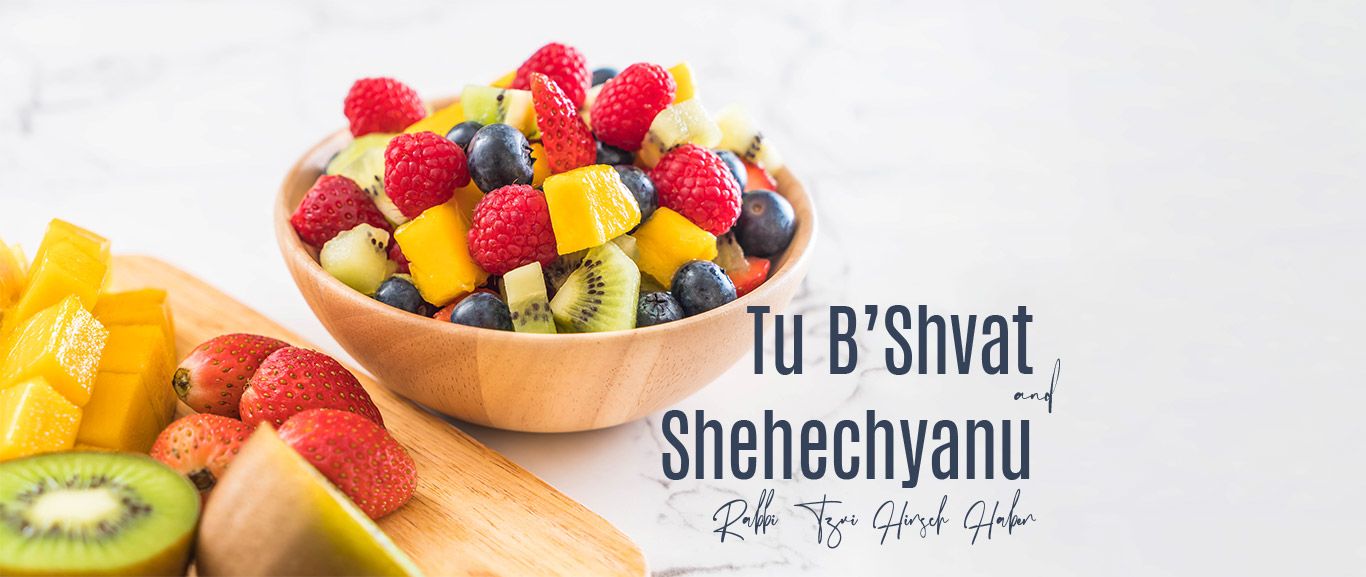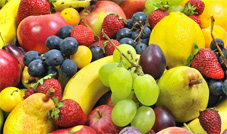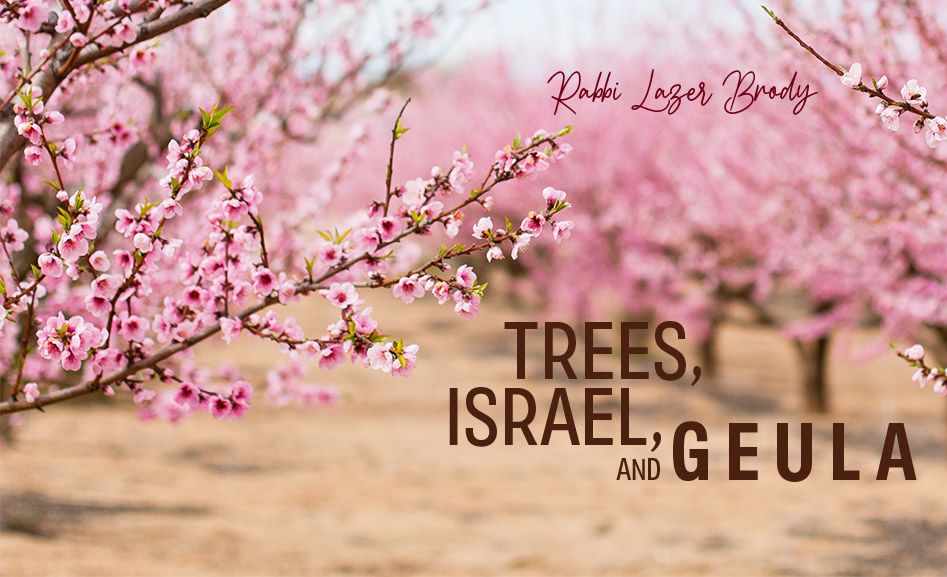
Tu B’Shvat and Shehechyanu
One should make a concerted effort to make the Shehechyanu blessing on new fruits, perhaps the custom came from Tu B’Shvat – the New Year for the trees...

Some years ago, I was invited to a Tu B’Shvat Seder/Friday Night Seudah / Potluck dinner in the Old City of Jerusalem. Although my recollections of that evening are somewhat fuzzy, I do recall that the company was great, there were many excellent wines (hence the fuzziness) and an astonishing variety of mouth-watering fruits.
Although the Tu B’Shvat Seder has recently gained popularity, especially among the Jewish vegetarian groups, it apparently was first conceived by the Arizal. The Chassidic Rebbes conduct a “Peiros Tish” or fruit meal on Tu B’Shvat, at which they distribute various fruits and nuts to their Chassidim.
This minhag is also cited by the Magen Avraham who writes: “The minhag of the Ashkenazim is to partake in  fruits on this day.”
fruits on this day.”
There is also a custom to eat the etrog from Sukkot on Tu B’Shvat. This of course would require some advance pickling or preservation. The Bnai Yissocher writes that Tu B’Shvat is a fortuitous time to daven for a Beautiful etrog the coming year.
Many try to find a Shehechyanu fruit for Tu B’Shvat. The origin of this custom is unknown, but some suggest that it may be based on a fascinating passage in the Jerusalem Talmud. At the very end of Kidushin, the Yerushalmi quotes:
“Rebbi Chizkiya R’ Cohen in the name of Rav: One will have to answer to the Heavenly Tribunal for every item he saw and did not partake of. Reb Elazar was very careful about this, and would save his pennies in order to have all the fruits that are available once a year.”
The meforshim (commentators) explain that he did so in order to have the opportunity to say Shehechyanu and thank Hashem for all that He created to make our lives more enjoyable.
From here we see that one should make a concerted effort to make Shehechyanu on new fruits, perhaps the custom became to do so on Tu B’Shvat – the New Year for the trees.
Nowadays, when many fruits are available year round, the opportunities to say Shehechyanu become rarer. One can however make a Shehechyanu on any fruit that is seasonal in his usual supermarket, even if it could be procured in a specialty store elsewhere.
The Piskei Teshuvos writes that when one makes Shehechyanu on fruit it is a celebration of the renewal of Hashem’s creation, that Hashem has designed an astounding ecosystem of sustenance which is all the more astounding in its seasonality.
Have a happy and inspiring Tu B’Shvat.
* * *
Our sincere appreciation to www.torahlab.org for permission to reprint the above essay.












Tell us what you think!
Thank you for your comment!
It will be published after approval by the Editor.